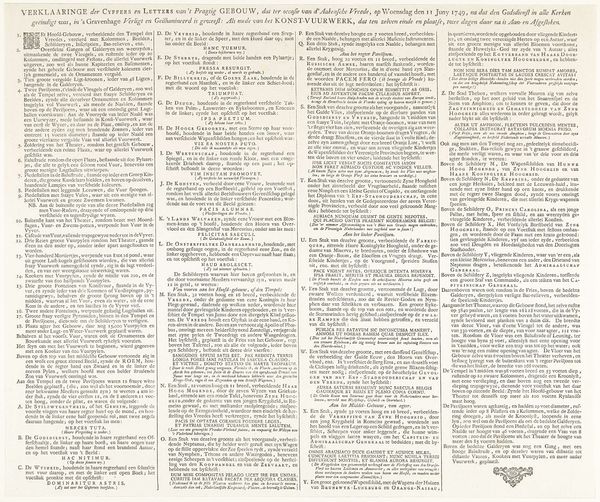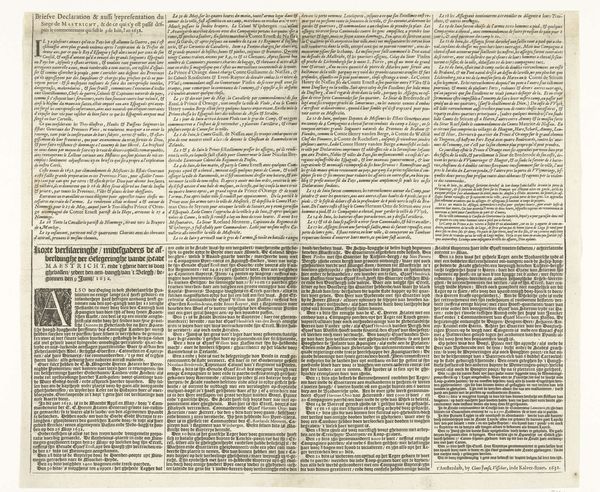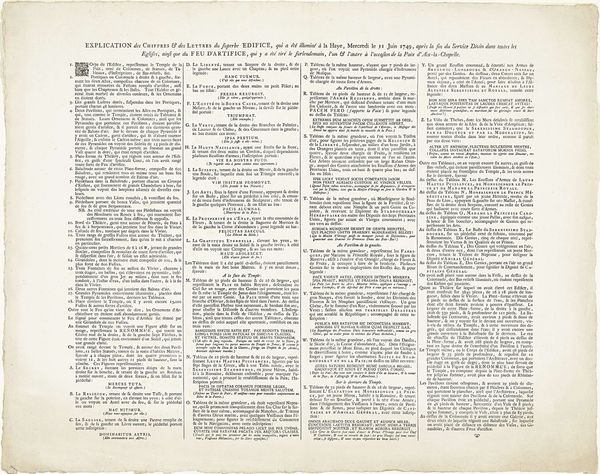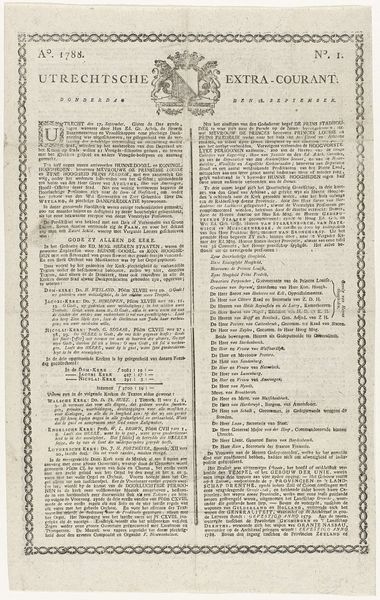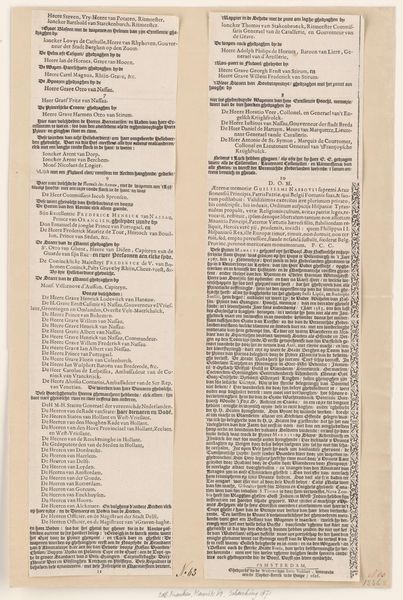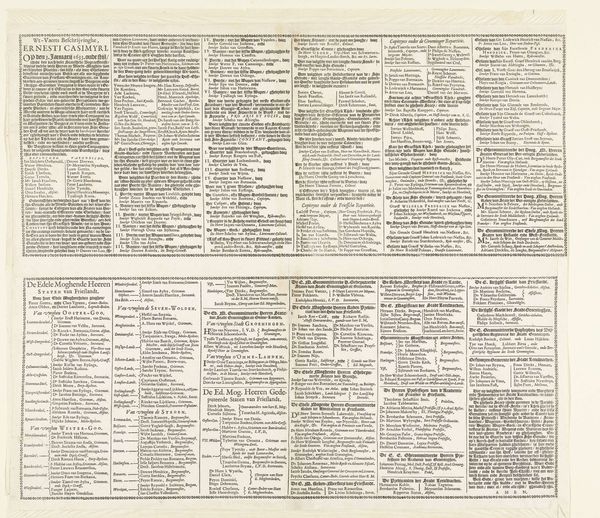
Tekstblad bij de allegorie op de overwinningen van de Republiek in het jaar 1709 1710
0:00
0:00
print, paper, engraving
#
editorial cover design
#
magazine publication
#
magazine cover layout
#
baroque
# print
#
magazine cover
#
paper
#
newspaper layout
#
spread layout
#
magazine layout
#
publication layout
#
magazine spread layout design
#
magazine design layout
#
history-painting
#
engraving
Dimensions: height 238 mm, width 536 mm
Copyright: Rijks Museum: Open Domain
This printed text sheet, created by Abraham Allard around 1709, commemorates the victories of the Dutch Republic. Though seemingly simple, the text alludes to the classical motif of the triumphal chariot, or "zegenwagen." The chariot, an ancient symbol, originally signified military triumph and imperial power in Roman culture. Victors were paraded through the city, embodying glory and dominion. This iconography was later adopted and adapted throughout history, appearing in Renaissance art and Baroque allegories. Consider, for instance, how similar images evoke intense emotions—awe, pride, and even fear of overwhelming power. The conscious and subconscious understanding of such motifs can powerfully stir feelings of national pride, while also reminding us of the cyclical nature of power and victory. These are feelings which endure through centuries. Here, the "zegenwagen" is not just a celebration of a moment, but a re-inscription of historical memory, reminding us how symbols evolve, carrying echoes of past glories and present aspirations.
Comments
No comments
Be the first to comment and join the conversation on the ultimate creative platform.

